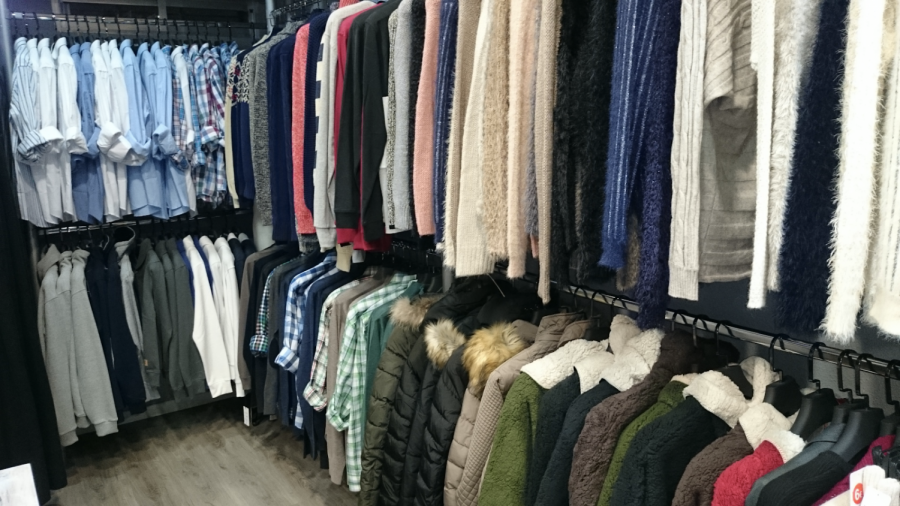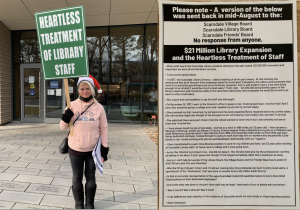Maroon Couture: Spring Cleaning…Sustainably
Now that Spring is here, it’s time for some cleaning – let’s try to clean sustainably.
March 22, 2020
Now that spring has sprung, it’s that time of year to clean out our closets! What better time to do that than now while we’re all under quarantine?? We can use this extra time we have at home to get organized and go through all the piles of clothing we have been accumulating. When we filter through our closets, we can assess what garments we still like/will still wear, what we have grown out of but are in good condition, and what is out of style/we would never wear again. Separate the items into piles of what you’d like to get rid of. Some items may never even have been worn and are almost new, some are gently used and in good condition, and some are too used to even donate.
Let’s address that category of clothing that you don’t want anymore even though they are practically new. Each year this category will grow exponentially due to the rise of “fast fashion”. Because of new designs being posted on social media every week, styles come and go more quickly, forcing the fashion industry to produce clothing at a faster pace. With this increased consumption comes more waste. In addition to quicker trends, people post themselves on social media wearing an outfit, and then don’t want to wear that outfit anymore because it’s already been seen, causing them to discard clothing that has barely been worn. We’re all guilty of doing this! Maybe if we are made aware of the problem, we’ll all think twice before getting rid of that piece of clothing that has only been worn once.
We are buying 60% more than we were in 2000, and since each garment has a shorter lifespan, this means higher manufacturing emissions. Textile production is one of the most polluting industries, producing more emissions than international flights. It is said to be responsible for around 5% of the total global emissions. Synthetic fibers such as polyester (which is cheap and used frequently for “fast fashion” garments) produce much higher emissions than natural and organic textiles and are harder to recycle. Virtually every synthetic fiber that has ever been created is still in existence. All this contributes to the problems associated with climate change.
So when we’re cleaning those closets, please keep this information in the back of your minds. Here are some ways we can help make our clothing choices more sustainable. (Keep your bags of clothing at home until our current health crisis subsides, but do not just throw them away!):
- Donate new or gently used clothing. There are many local charities that take donations.
- Kids’s Kloset – donate children and teen’s clothing size Newborn to Adult XXL to benefit children in need all over Westchester (White Plains): https://www.914cares.org/kids-kloset/
- Pick Up Please – schedule a pickup to donate clothing and shoes to help the Vietnam Veteran’s of America in Westchester: https://pickupplease.org/donate-clothing-in-westchester-county/
- Big Brothers Big Sisters of Westchester– schedule a pickup to donate clothing and shoes: http://www.bigswestchester.org/donate-clothing
- Good Will – local donation stores are in New Rochelle or Elmsford: https://www.goodwill.org/location/?store=1896
- Consign your “better” or designer clothing
- The Real Real – online consignment for luxury goods: https://www.therealreal.com
- Linda’s Stuff – online consignment for mid-range goods: https://shoplindasstuff.com
- The Mazie Shop – consignment shop located in Scarsdale: http://www.themaizieshop.com
- Encore Designer Consignment – designer consignment shop located in Rye: https://encorerye.com
- Recycle your items that are too worn to donate – Bring your worn items in a bag to the Scarsdale Sanitation Binny Box at 110 Secor Road. A larger facility is at the Household-Material Recovery Facility (H-MRF) located at 15 Woods Rd., in Valhalla, NY.
According to Westchester.gov, “After collection, approximately 45% of the recovered materials are reused as apparel; about 30% of recovered textiles are not suitable for reuse and are recycled into wiping and polishing cloths; 20% are reprocessed into fibers for furniture stuffing, carpet padding, insulation and other materials; only 5% is unusable and unfit for recycling.
- Upcycle your outdated clothing – many of your clothes only need a small tweak rather than throwing them away. Bring them to a local tailor to alter and do simple things yourself like cutting the bottom of a pair of jeans to make a cropped jean style. Stay tuned for my “how-to’s” on ways to transform your old clothing in my upcoming blog posts.
- Re-style your outfits – before throwing away that blouse you only wore a few times, see how you can recreate it by pairing it with different bottoms, belting it or adding new accessories. It can take on a whole new look.
Remember, a “zero waste” mentality from everyone when it comes to your clothing can help prevent climate change in the future!


























